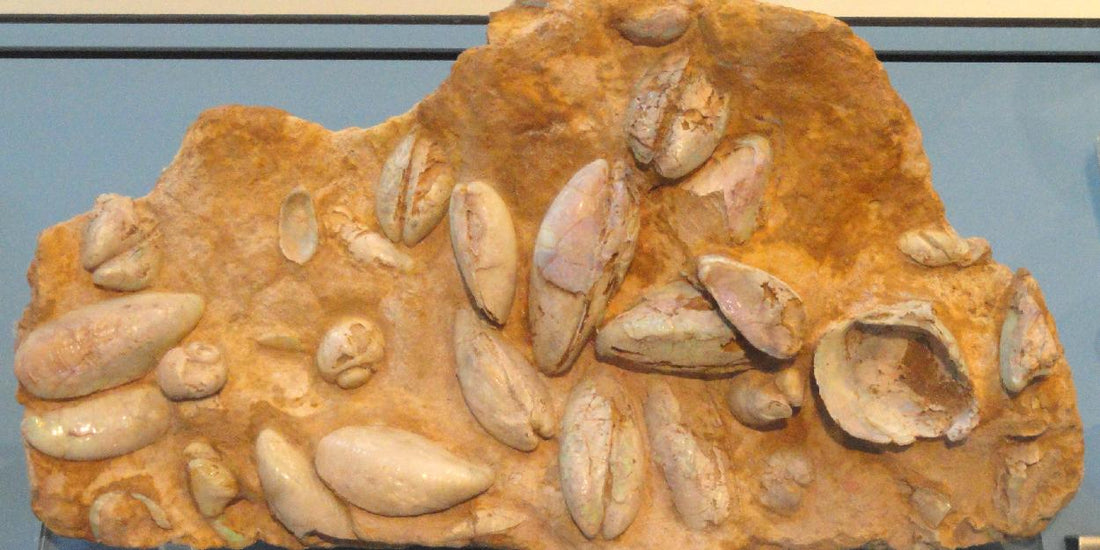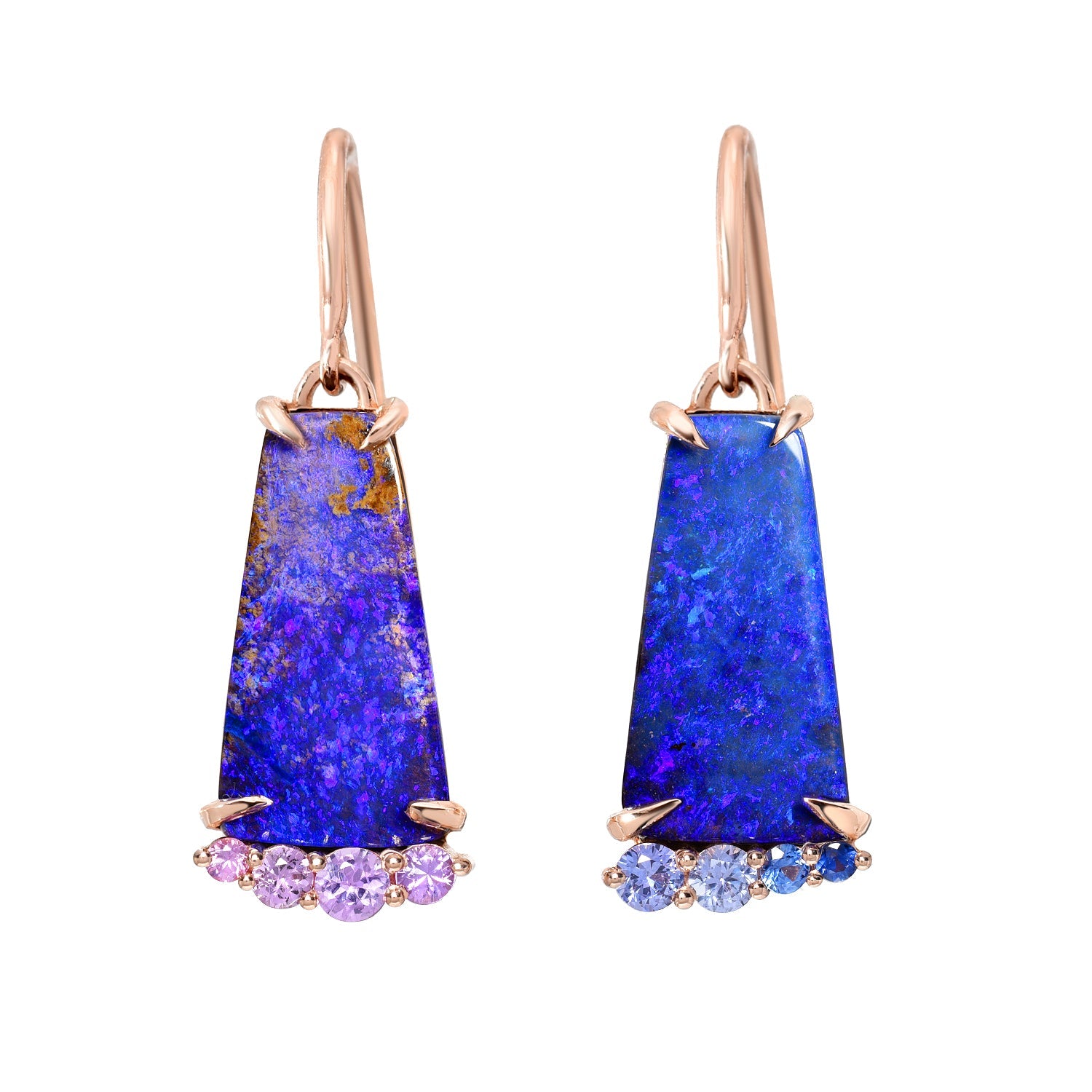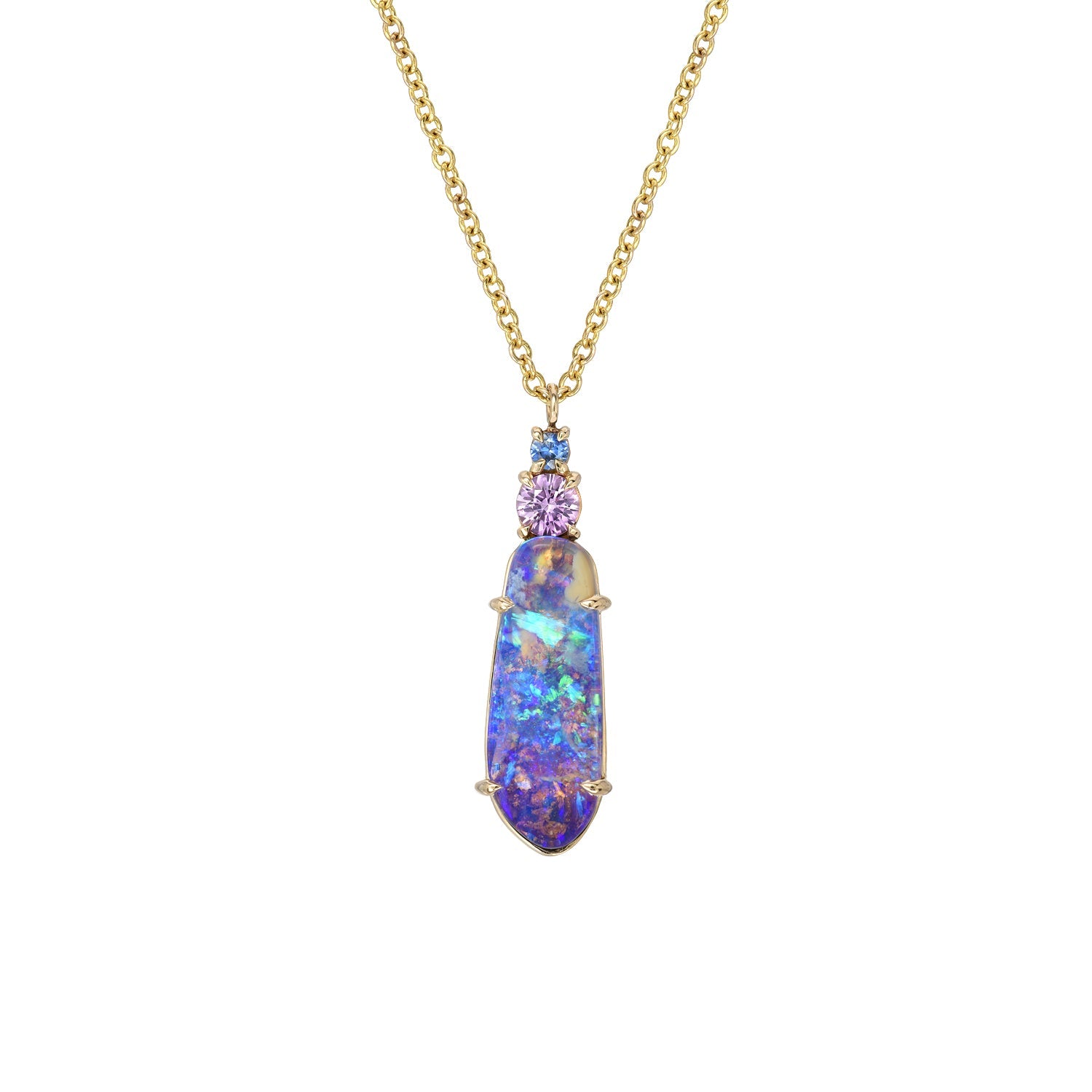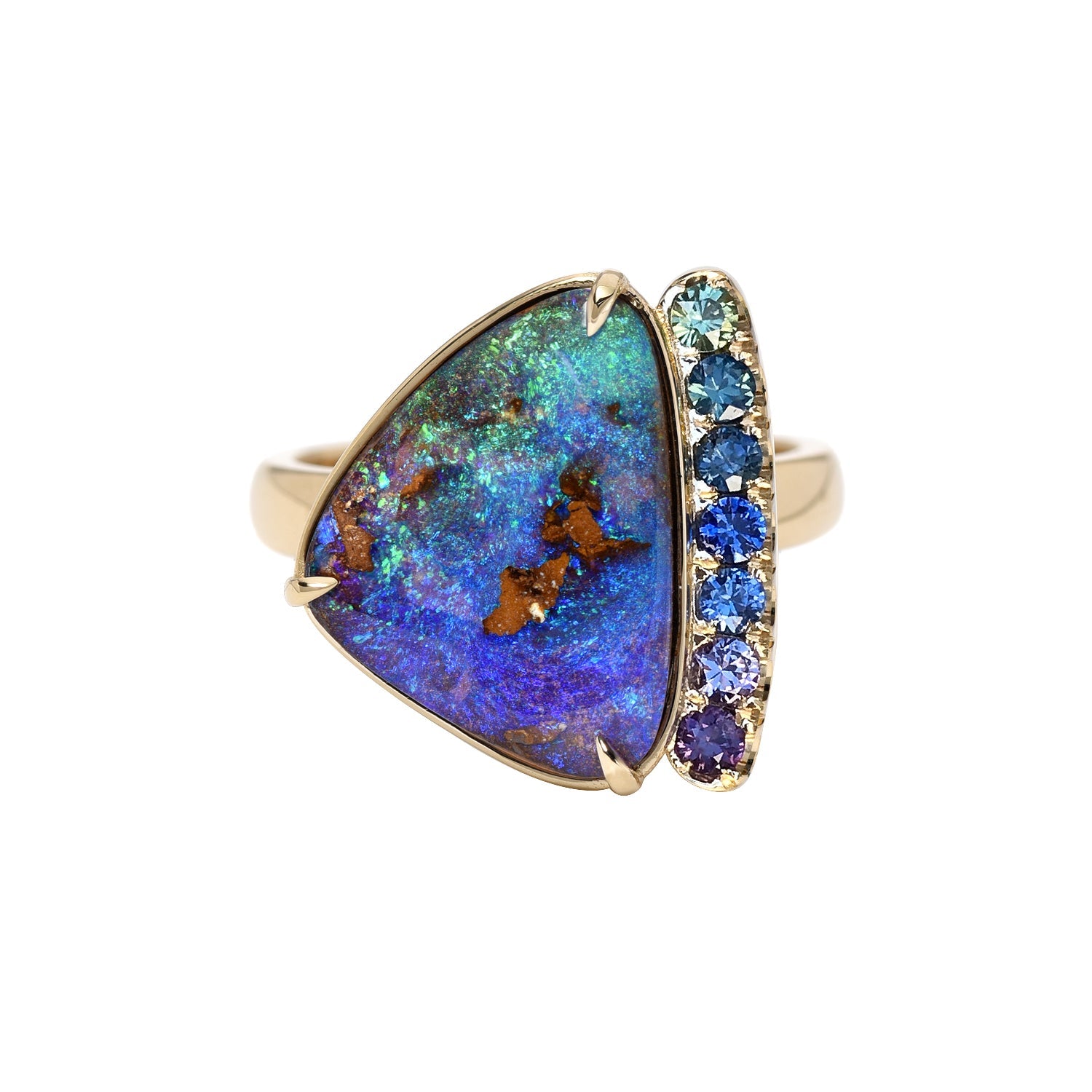Opals are some of the most breathtaking gemstones in existence. Since humanity stumbled upon them, they have captivated our imagination. They were among the first gemstones used for engagement rings, and for professing one's love, they have been used as religious icons and talismans - and in some parts of the world still are - and today, they are one of the main exports of Australia and Ethiopia. Why are they so fascinating? Well, because Opals are diverse in a way unlike diamonds or other gemstones. Not only due to their color, but due in part to their composition. In this blog, we’ve discussed their color and composition — talked about synthetic Opals, Boulder Opals, Black and Crystal Opals. We’ve broken them down and given accounts of what makes them so unique and special. Today, we’re adding a new one to the list — Fossil Opals, or Fossilized Opals. Stick around and find out what they are, how they form, and learn about the various types that have been unearthed.
What are Fossil Opals?
Back when dinosaurs roamed the earth, in Australia - one of the biggest contemporary Opal depositories in the world - The Great Artesian Basin was an inland sea, the Eromanga Sea. It covered much of Australia, including parts of Queensland and New South Wales. Unlike other seas, the Eromanga was shallow, muddy, sluggish and cold. It was less of a sea and more like a swamp.

The Eromanga Sea, Map of the Great Artesian Basin in Australia - Tentotwo , Wikimedia Commons
Dinosaurs and other animals, not to mention plant life, called this place home. It was rich with nutrients, agreeable to marine life, and brimming with mollusks and other tasty treats. Not only that, but due to the fact that it was so shallow, the sea couldn't sustain particularly large ocean-dwelling predators. It was, to many, a Goldilocks-like area — just right.
One of the predators in the Great Basin was the Umoonasaurus demoscyllus — a type of Plesiosaur. It had a body resembling a seal and a short neck, with decorative ridges adorning its eyes and snout. Based on its long needle-like teeth, it likely maintained a diet of fish and squid, it could easily pierce through. Although these creatures were actually aquatic carnivorous reptiles, some have referred to them as dinosaurs — in actuality, they just coexisted with dinosaurs.
In 1987, a miner in Coober Pedy came upon the opalized fossil of a Umoonasauras demoscyllus. What made this discovery so incredible was that the skeleton was nearly complete. Deemed ‘Eric the Dinosaur’ - even though he’s not really a dinosaur - Eric is one of the most complete opalized vertebrate fossils discovered to date. Evidence of fish bones were found near his stomach, supporting dietary beliefs. Today, Eric’s skeleton resides in the Australian Museum in Sydney.

Eric the Dinosaur in the Australian Museum
When sea life in the Eromanga, like Plesiosaurs, died, their remains drifted to the bottom of the ocean, sinking deep into the sediment, until they were fully engulfed by sand and sludge. Over time, all those bones, shells, plants, and other organic matter began to decay — as they rotted away, they left behind voids which later filled in with silica-rich water. This replacement material solidified over time, becoming the gemstone we know as Australian Opal.
Opal, unlike many other gemstones, is extremely adaptable and flexible in formation as it has no predetermined structure, no shape of its own — it acquires its shape by filling in cavities, and voids and taking on the shape of the space it occupies. It is this unique characteristic that enables the formation of these extraordinary Opal fossils.
Australia’s Many Environments
What makes this whole tale, the age-old origin of fossilized Opals, even more amazing is the Australian landscape. Australia is an incredibly diverse biosphere. Compared to other places in the world, it has it all, in its relatively small imprint of a nation. From deserts to great barrier reefs, Australia’s flora and fauna are unlike any other. Not only that, but due to its remote nature, Australia’s fauna has been relatively well preserved when compared to that of other nations. Koalas, Kangaroos, and other unique species found only on this continent have never known the possibility of extinction — they have been spared the actions of wanton hunters.

Courtesy of the Brisbane Opal Museum
So how does this pertain to Opals?
Well, it means that fossilized Opals from Australia are also incredibly diverse, because they immortalize the unique creatures from each niche of the continent. For example, White Cliffs, Coober Pedy, and Andamooka were all marine environments, so Opal fossils extracted from those locations reflect a cornucopia of marine organisms. In comparison, Lightning Ridge was once a freshwater haven, so opalized fossils of land dwelling creatures - like dinosaurs - and other animals and plants that depended on freshwater, have been unearthed here. Australia's diverse biosphere results in an eclectic mix of ancient relics.
Aquanova Blue Green Opal Ring - with Wood Fossil Boulder Opal
Types of Opal Fossils

In Australia, you can find fossilized Opals of all manner of creatures — from land-dwelling and sea faring to airborne. Here are some examples of the incredible Opal fossil specimens you can find:
- Plants: seeds, pinecones and splintering wood can all be found converted into fossilized opal
-
Pineapples: these aren’t what you might think - it’s not actually opalized fruit - but does resemble it. Opal Pineapples form when Opal replaces another mineral, taking on the shape of the clustered crystals it supplanted, earning these unique specimens the title of ‘pseudomorphs.’ Based on assumptions around temperatures required for them to form and for the replaced mineral, ‘ikaite’, to have become extinct, scientists believe these Opal pineapples formed in the Ice Age.

- Mollusks: such as mussels, snails and cockles. Some are preserved as beautiful rainbow shells.

- Belemnites: an ancient squid-like cephalopod. Its closest relatives today would be the squid and the cuttlefish. Opalized belemnite fossils are shaped like elongated bullets and are often sparkling with color.

- Fish: a range of opalized fish fossils have been discovered including lungfish, bony fish, freshwater crayfish (or ‘yabby buttons’) and even the occasional shark tooth.
- Frog: the upper jaw of a frog was discovered at the Coocoran Fields of Lightning Ridge
- Turtles: including three types of land and swamp dwellers and the oldest horned turtle ever found.
- Crocodiles: three species of these as well, though they fare smaller than modern day crocs.
- Birds: limited specimens, but some have been found.
- Pterosaurs: flying reptiles that coexisted with dinosaurs.
- Plesiosaurs: marine reptiles - ‘Eric’ was an example of one.
- Dinosaurs: a host of opalized dinosaur bones have been procured, from a range of species, including the likes of theropods and ankylosaurs.
Fossilized Opals Today
Appreciation of fossilized Opals is still in its infancy. Why? Because most Opals are prioritized for use in jewelry and fossilized Opals are not only hard to come by but also necessitate extra measures to export out of Australia, often requiring a special permit. Unlike other Opals found in Australia, fossilized Opals bear a scientific value. They can be used by paleontologists and other scientists to uncover facts about Australia’s past.
Most of the time, miners in the trade - understandably - seek a profitable payoff for their hard work. This doesn’t usually translate to a focus on Opal fossils, as Fossil Collectors are few — relative to those buying gems for Opal jewelry making. Fossilized Opals can also take up more time, and may first need to be vetted and cleared for sale by the authorities. For these reasons, Opal stones geared toward designers or jewelers are where more of the focus currently lies.
Although there is a much larger market for Opals ready to be set into jewelry, over time, it’s likely that the demand (or at least the value) for fossilized Opals will increase. These relics are so rare, and will only become more so as time goes on — there’s a good chance that those who invested in these literal time capsules will see them appreciated in the future.
Each piece of Opal jewelry holds millions of years of history — that carries a lot of meaning with us. Here at NIXIN Jewelry, we pay attention to every nuance of each Opal — we hope you feel it in our work. Come see which capsule of time resonates with you.





